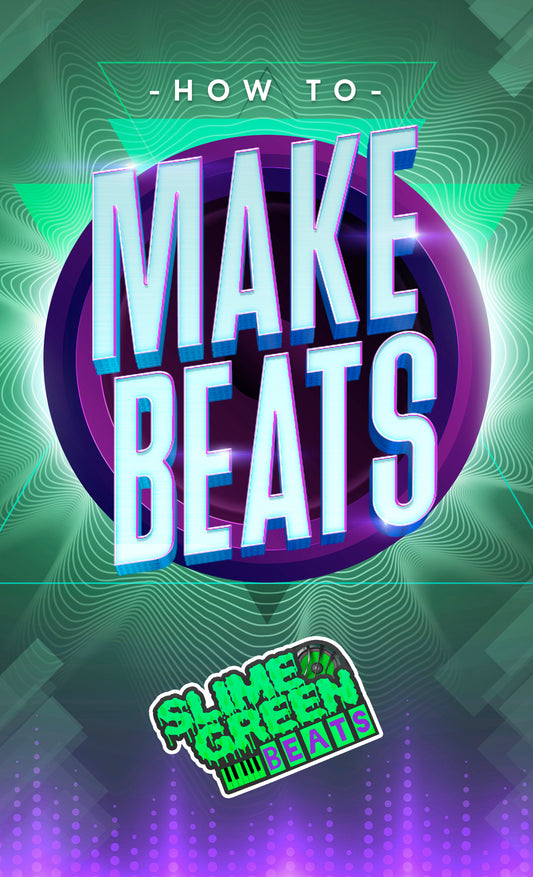Sidechain compression is a powerful mixing technique that has become ubiquitous in modern electronic dance music. It allows you to create pumping and groovy rhythms by using the volume of one track to control the compression of another. In this blog post, we will go over how to sidechain in FL Studio 21, step by step.
What is sidechain compression?
Sidechain compression is a mixing technique that involves using the volume of one track to control the compression of another. This technique is used to create rhythmic pumping effects and to make elements in a mix stand out.
When you apply sidechain compression, the compressor is triggered by the signal from another track, known as the sidechain input. The compressor then reduces the volume of the track it's applied to when the sidechain input is present. This creates a pulsing effect that is particularly effective on elements like kick drums and basslines.
Step 1: Choose the tracks you want to sidechain
Before you begin sidechaining, you need to decide which tracks you want to use. Typically, you will want to sidechain the bassline or the kick drum to other elements in your mix, such as pads or synths. For this example, we will be sidechaining the bassline to the kick drum.
Step 2: Add a compressor to the track you want to sidechain
Once you have selected the tracks you want to sidechain, the next step is to add a compressor to the track you want to sidechain. In this case, we will add a compressor to the bassline track.
To do this, select the bassline track in the mixer, and then click on the arrow in the top left corner to open the channel settings. Next, click on the "Add" button and select "Fruity Limiter" from the list of options. This will add a limiter to the channel.
Step 3: Set up the sidechain input
Now that you have added a compressor to the bassline track, you need to set up the sidechain input. This is the track that will be used to trigger the compressor on the bassline track.
To set up the sidechain input, select the limiter on the bassline track, and then click on the "Comp" tab. Next, click on the drop-down menu next to "Sidechain" and select the track you want to use as the sidechain input. In this case, we will select the kick drum track.
Step 4: Set the compressor threshold and ratio
Once you have set up the sidechain input, the next step is to set the compressor threshold and ratio. The threshold determines the level at which the compressor kicks in, while the ratio determines how much the compressor reduces the volume of the bassline track when the sidechain input is present.
To set the threshold, click and drag the threshold knob on the limiter until you find the level at which you want the compressor to kick in. You may need to adjust this later to get the desired effect.
To set the ratio, click and drag the ratio knob on the limiter until you find the amount of compression you want. A higher ratio will result in more compression, while a lower ratio will result in less compression.
Step 5: Adjust the attack and release settings
Once you have set the threshold and ratio, the next step is to adjust the attack and release settings. The attack determines how quickly the compressor kicks in, while the release determines how quickly the compressor stops compressing.
To adjust the attack, click and drag the attack knob on the limiter until you find the desired attack time. A shorter attack time will result in a more pronounced pumping effect, while a longer attack time will result in a more subtle effect.
To adjust the release, click and drag the release knob on the limiter until you find the desired release time. A shorter release time will result in a more pronounced pumping effect, while a longer release time will result in a more sustained effect.
Step 6: Fine-tune the sidechain compression
After you have set up the basic sidechain compression, it's time to fine-tune it to get the desired effect. There are a few things you can do to fine-tune the sidechain compression:
-
Adjust the threshold: If the pumping effect is too pronounced, you can increase the threshold to reduce the amount of compression.
-
Adjust the ratio: If the pumping effect is not pronounced enough, you can increase the ratio to increase the amount of compression.
-
Adjust the attack and release: If the pumping effect is too fast or too slow, you can adjust the attack and release to get the desired effect.
-
Use EQ: You can also use EQ to shape the sound of the sidechain compression. For example, you could use EQ to boost the frequencies of the kick drum that you want to trigger the compressor.
Step 7: Apply sidechain compression to other elements
Once you have sidechain compressed the bassline to the kick drum, you can apply sidechain compression to other elements in your mix. For example, you could sidechain compress a pad or a synth to the kick drum to create a rhythmic pumping effect.
To do this, you would follow the same steps as above, but with different tracks. You would select the track you want to sidechain, add a compressor to it, set up the sidechain input, and adjust the settings to get the desired effect.
Conclusion
Sidechain compression is a powerful mixing technique that can be used to create rhythmic pumping effects in your music. In FL Studio 21, sidechaining is easy to set up, and with a little bit of practice, you can achieve the desired effect in no time.
By following the steps outlined in this blog post, you can sidechain compress your bassline to your kick drum, and then apply sidechain compression to other elements in your mix to create a cohesive and groovy sound.
Remember that sidechain compression is just one tool in your mixing toolbox, and that it should be used in moderation. Too much sidechain compression can make your mix sound gimmicky and amateurish. Use it sparingly, and in the right context, and it can be a powerful tool for taking your music to the next level.
If you're interested in learning more about beat making and music production, be sure to check out my book "How to Make Beats" by Slime Green Beats.








